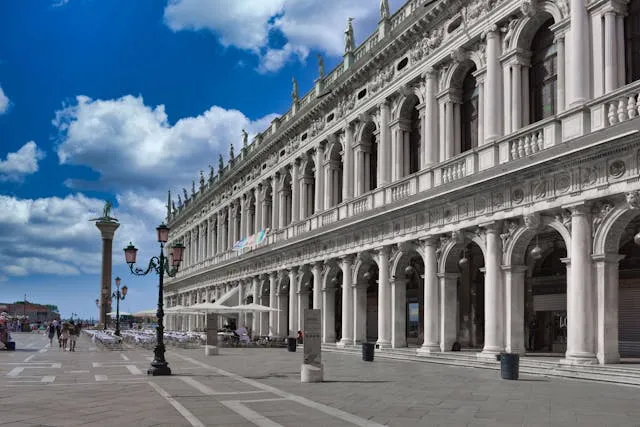Rajasthan, the Land of Kings, is a land where history, culture, and royalty come alive through its majestic forts and palaces. The state’s architectural marvels are not just remnants of the past but symbols of its glorious heritage. These Forts & Palaces in Rajasthan offer an immersive experience into the regal lifestyle, where you can walk through centuries-old halls, traverse mighty battlements, and admire intricate carvings that tell stories of valor, grandeur, and royal splendor. From the towering fortresses perched atop rugged hills to the opulent palaces that once housed kings and queens, Rajasthan is a true testament to architectural and historical magnificence. Let’s explore some of the most iconic forts and palaces that define the royalty of Rajasthan.
1. Amer Fort (Jaipur): A Majestic Blend of Mughal and Rajput Architecture
Located just outside the city of Jaipur, Amer Fort (or Amber Fort) is one of the most famous and impressive forts in Rajasthan. Known for its striking blend of Mughal and Rajput architecture, the fort stands tall on a hill, overlooking the Maota Lake. Built by Maharaja Man Singh I in the late 16th century, Amer Fort is a sprawling complex that includes a series of courtyards, halls, and temples.
The Sheesh Mahal (Mirror Palace) inside the fort is particularly stunning, with walls and ceilings adorned with intricate mirror work that sparkles like a thousand stars when illuminated. The fort’s Diwan-i-Aam (Hall of Public Audience), Diwan-i-Khas (Hall of Private Audience), and Sukh Niwas (Hall of Pleasure) offer a glimpse into the opulent lifestyle of the royal family.
Amer Fort is not just a fort but an experience, with a grand entry gate, ramparts, and beautiful gardens that speak of the grandeur of Rajasthan’s royal past. The fort is a UNESCO World Heritage Site and one of the most celebrated Forts & Palaces in Rajasthan.
2. Mehrangarh Fort (Jodhpur): The Invincible Stronghold
Mehrangarh Fort, located in the blue city of Jodhpur, is one of the largest and most majestic forts in Rajasthan. The fort’s massive structure rises above the city, offering panoramic views of the sprawling city below. Built in the 15th century by Rao Jodha, the fort is an impressive feat of engineering, with towering walls that rise as high as 120 feet.
Inside, visitors can explore a series of palaces, museums, and courtyards, each showcasing the grandeur and opulence of the Marwar rulers. The Moti Mahal (Pearl Palace), Phool Mahal (Flower Palace), and Sheesh Mahal are stunning examples of Rajput architecture, with beautifully decorated rooms, intricate carvings, and delicate frescoes.
Mehrangarh also houses an extensive collection of artifacts, including armor, palanquins, and royal costumes, which provide a glimpse into the royal lifestyle of the Rajput kings. A visit to this magnificent fort is a journey through history, where every corner reflects the majesty of Rajasthan’s royal past.
3. City Palace (Jaipur): The Heart of Jaipur’s Royal Legacy
The City Palace in Jaipur is an extraordinary complex that combines traditional Rajasthani and Mughal architecture. Located in the heart of Jaipur, the palace was the residence of the Maharajas of Jaipur and is an iconic symbol of Jaipur’s royal heritage. The palace complex is an amalgamation of courtyards, gardens, museums, and temples, offering visitors a glimpse into the lavish lifestyle of the royal family.
One of the highlights of the palace is the Chandra Mahal, a seven-story building that houses the royal apartments. The palace is also home to the Mubarak Mahal, which now houses a museum showcasing costumes and textiles, as well as the Diwan-i-Khas, where the Maharaja held private meetings with his ministers. The intricate wall paintings, ornate doors, and stunning courtyards are some of the architectural marvels that make the City Palace a must-visit among Forts & Palaces in Rajasthan.
4. Udaipur City Palace: The Jewel of Lake Pichola
The City Palace in Udaipur is a stunning white-marble structure that overlooks the serene waters of Lake Pichola. Built over several centuries, the palace complex is a beautiful fusion of Rajasthani and Mughal architectural styles, featuring grand courtyards, intricately painted rooms, and ornate balconies. The palace is one of the largest in Rajasthan and houses numerous palaces within its walls, including the Zanana Mahal (Queen’s quarters), Shiv Niwas Palace, and the Fateh Prakash Palace.
The palace’s Zenana Mahal is especially beautiful, with painted glass windows, decorative tiles, and delicate carvings that transport visitors back in time. One of the most striking features of the Udaipur City Palace is its location, offering panoramic views of Lake Pichola, the Jag Mandir, and the surrounding Aravalli hills. A boat ride on the lake offers a unique perspective of the palace, making it one of the most romantic and picturesque locations in Rajasthan.
5. Jaisalmer Fort: The Golden City Fortress
Jaisalmer Fort, also known as the Sonar Quila (Golden Fort), is a UNESCO World Heritage Site and one of the largest living forts in the world. Built in 1156 AD by Raja Jaisal, the fort is made of yellow sandstone that gives it a golden hue, especially during the sunset. Jaisalmer Fort is unique because it houses an entire living city within its walls, with temples, havelis, and shops still in use today.
The fort’s architecture is a blend of Rajput and Jain styles, with intricately carved facades, ornate temples, and royal palaces like the Maharawal Palace. The Laxminath Temple and Jain Temples within the fort are exquisite examples of the fine craftsmanship of the period. As you walk through its narrow lanes and discover its hidden corners, Jaisalmer Fort provides a step back into Rajasthan’s regal history and is among the most significant Forts & Palaces in Rajasthan.
6. Chittorgarh Fort: A Legacy of Valor
Chittorgarh Fort, located in the southern part of Rajasthan, is another monumental example of the state’s rich history. Built in the 7th century, this fort is a symbol of Rajput valor and sacrifice, with tales of bravery and honor etched into its walls. The fort is vast, covering an area of over 700 acres, and includes several temples, palaces, and towers.
Notable sites within the fort include the Vijay Stambh (Victory Tower), which commemorates the victory of Rana Kumbha over the Sultan of Malwa, and the Kirti Stambh (Tower of Fame), dedicated to the Jain Tirthankara Adinatha. The Padmini Palace, where the legendary queen Padmini is said to have performed jauhar (self-immolation) to protect her honor, is another poignant landmark in the fort. The fort’s architecture, steeped in history, along with its grandeur, makes it one of the most important fortresses in Rajasthan.
7. Conclusion
Rajasthan, the Land of Kings, stands as an awe-inspiring repository of India’s royal heritage, and nowhere is this more evident than in its majestic forts and opulent palaces. These architectural marvels are more than just tourist attractions—they are living monuments to centuries of valor, splendor, and regal tradition. Each fort and palace in Rajasthan tells a unique story, steeped in history and echoing the tales of heroic battles, legendary rulers, and artistic brilliance.
Towering above the blue city of Jodhpur, the Mehrangarh Fort dominates the skyline with its colossal ramparts and intricately adorned interiors. Built in the 15th century, this fort is a masterpiece of Rajput architecture, featuring expansive courtyards, elaborately carved panels, and a museum housing priceless artifacts from Rajasthan’s royal lineage. As you walk along its battlements, the panoramic views of the city below are as breathtaking as the fort’s storied past.



